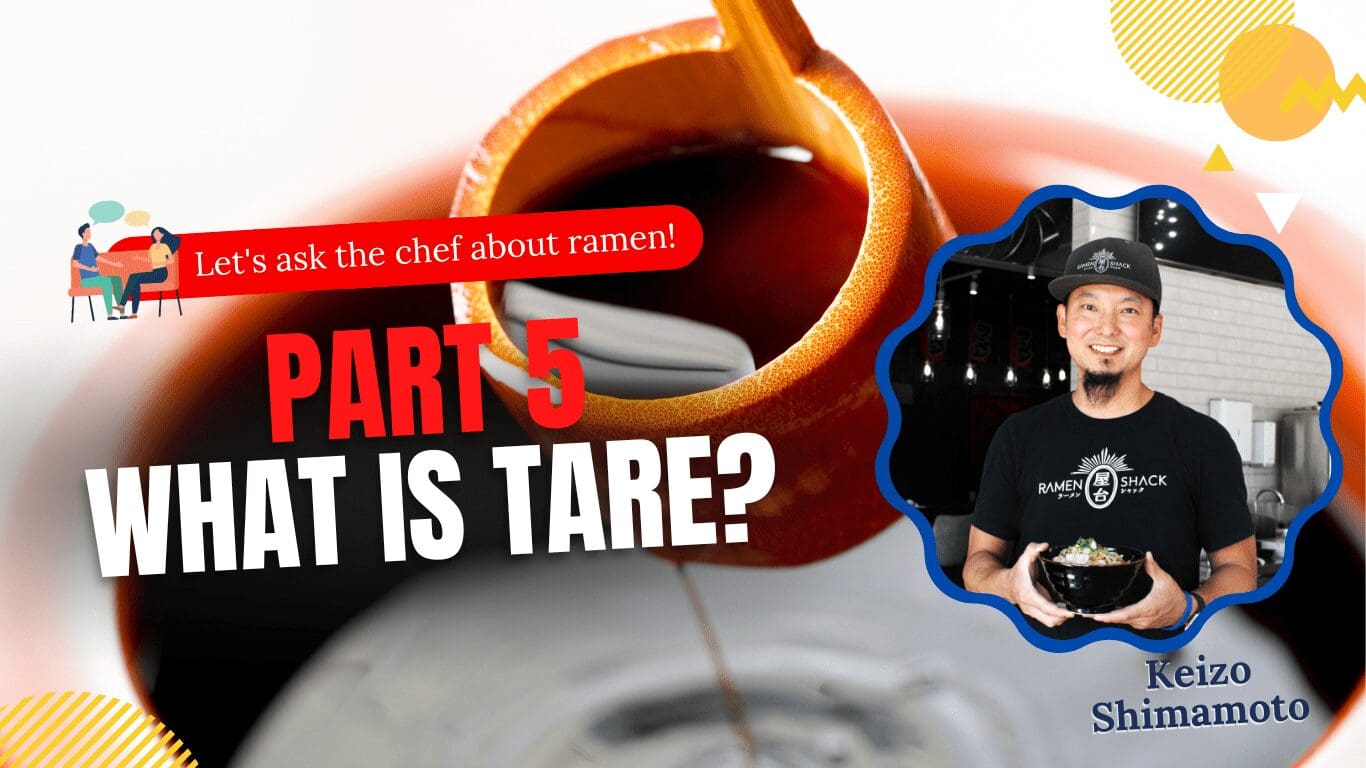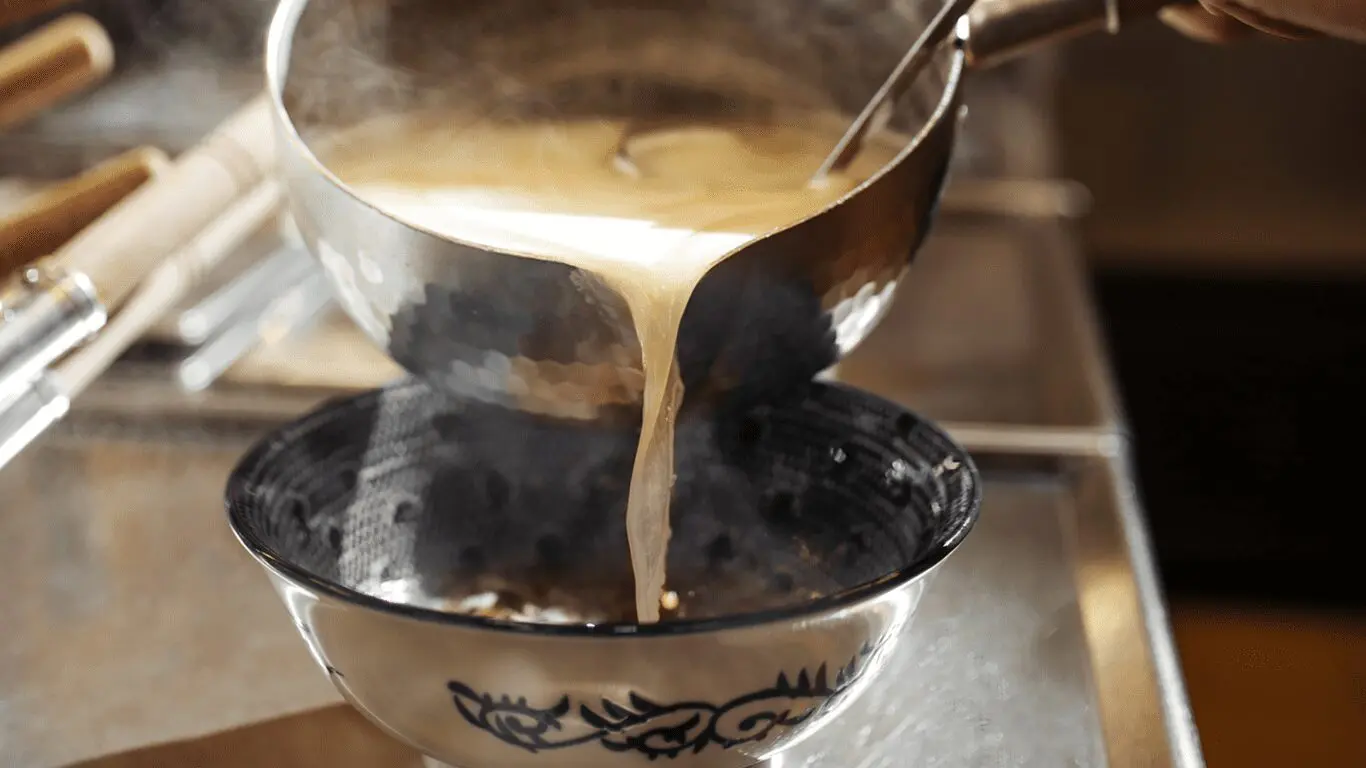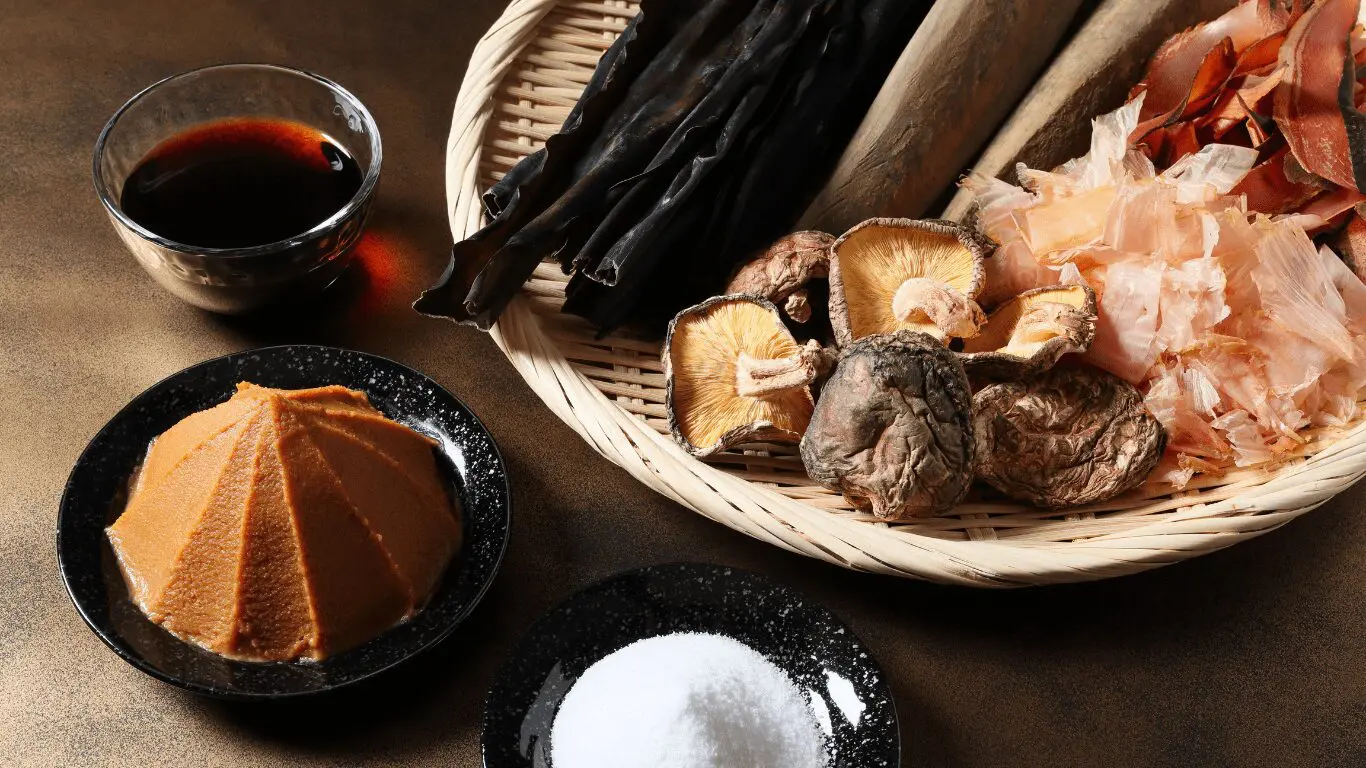LET’S ASK THE CHEF ABOUT RAMEN! PART 5: WHAT IS TARE?
Published: Jul 17, 2023/ Last Updated:Jul 17, 2023
- 3 min read

So far, we have explained about ramen making as a part of the “Ask the Chef About Ramen” series. In series 1 to 4, we have explained in detail about noodle making, noodle cutter numbers, and “noodles”. This blog will be the final series! The last series will be going over “soup”, which is another element of ramen. Soy sauce ramen, tonkotsu ramen, miso ramen, etc., all give different impressions depending on the soup. Whether you like soy sauce ramen with a refreshing seafood broth or tonkotsu ramen with rich pork bone broth, everyone may have their favorite ramen. The secret to it’s delicious soup is in it’s basic, “tare”! Let’s take a look at what tare is.

Keizo Shimamoto
Inventor of Ramen Burger and founder of Ramen Shack. Influenced by a burger using chashu he encountered while training in Japan, he invented the Ramen Burger in the United States, which was a huge success. He knows ramen thoroughly and is passionate about making ramen. A self-admitted and renowned ramen freak.
- Index
What is Tare?

Tare is “the secret” ingredient in ramen, which inevitably becomes the base of everyone’s obsession, especially for those that want to learn more about this craft. For many ramen chefs, this concentrated flavoring is a closely guarded “top-secret recipe” that took several years of training to develop. While the training could vary from one and a half years to three years, it takes a long period of training. The blood, sweat, and tears of apprenticeship and the rigorous years of running a ramen shop are often the only way to earn a tare recipe of your own.
The importance of tare

In most common cuisines, soup stocks are prepared in advance, seasoned with salt and spices in big batches so there is no clear concept of tare. However, ramen is made to order, one bowl at a time with the addition of tare, dashi (soup stock) and komi abura (flavoring oil) for soup. Ramen in each bowl is flavored to order which will allow for flexibility across different menu items and strengthen the importance of one versatile tare.
So, what is in the tare? Tare can come in many forms and complexities, just as you may associate multiple flavors with the word ramen. The main variations are Shoyu (soy sauce), Shio (salt), and Miso (soybean paste). However, shio tare can also contain soy sauce and vice versa. Tare is a combination of multiple seasonings that adjusts the right amount of umami, saltiness, and flavor for that particular ramen.
The “secret ingredient” of tare

Here’s a brief introduction to the “secret ingredient” of tare. The simplest of all tare is just a good soy sauce. Many restaurants use a blend of different soy sauces, salts, and other ingredients. To this blend, additional ingredients such as mirin, sake, kelp, and dried sardines are used to customize the flavor, which becomes the “secret flavor” of each ramen restaurant.
Because most soy sauce manufacturers in Japan have spent generations crafting their small batch products, it is not uncommon for a ramen shop to use only that soy sauce as their tare. The salinity is just right and it doesn’t get more pure than that. That is how particular all ramen shops are about the sauce they use in their cooking.
Conclusion

Now, we have explained one of the components of ramen soup, tare. We hope this blog has helped you learn that the secret to the soup’s deliciousness lies in the sauce. In the ” Ask the Chef About Ramen” series, we have covered the process of making ramen noodles and soup through series 1 to 5. We hope that by learning about the behind-the-scenes process of making ramen, you are able to appreciate the passion that goes into the making of a bowl of ramen and the appeal of ramen even more. Myojo USA also publishes a variety of other blogs, such as a blog introducing komi abura, the defining flavor in ramen, and a blog on dashi, the umami component of soup stock. Please visit our other blogs to learn more about ramen. Thank you very much for reading up to this point. See you again in the next blog!
Myojo × Keizo Shimamoto


